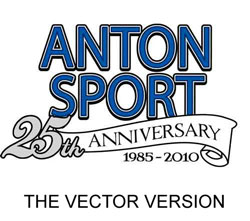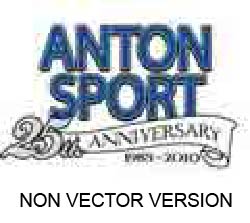Choosing the Right File Type
We understand that submitting artwork for custom t-shirts can sometimes be confusing, especially when it comes to file types. In this guide, we’ll help you navigate through the different file types and provide you with the information you need to ensure high-quality prints or embroidery for your custom t-shirts. You don’t need to be an expert on file types to get the best looking custom apparel. Our team is trained to help you no matter what artwork you may already have. Now let’s get to the details.
Why File Types Matter
Low-resolution art files are one of the biggest challenges when it comes to achieving successful, high-quality t-shirt prints. To ensure the best results, it’s important to understand the characteristics of different file types and their impact on print quality. Let’s explore the two main file types: vector and raster.
Vector Files: The Best Choice for Printing
Vector files are the preferred file type for printing custom t-shirts due to their ability to maintain high quality at any size. They are defined by mathematical points, which define the lines, shapes, colors, and other graphic elements. Common vector file types include PDF, AI, and EPS. Here’s why vector files are the best choice:
- Scalability: Vector files are infinitely scalable, meaning they can be resized without losing quality. This makes them ideal for designs with sharp edges, text, and intricate details.
- Compact Size: Vector files tend to be smaller in size compared to raster files, making them easier to store, share, and upload.
Raster Files: High Resolution for Best Results
Raster files, also known as bitmap files, are another option for custom t-shirt printing, especially for photographic images. However, it’s important to ensure that raster files are of high resolution and have minimal compression to achieve the best results. Here’s what you need to know about raster files:
- Resolution Matters: The resolution of a raster file determines its level of detail. For printing, it’s recommended to have a resolution of at least 200 dots per inch (dpi) at the full size of the intended print.
- Compression Considerations: When saving raster files, it’s crucial to choose appropriate compression settings. Lossless compression formats like TIFF and PNG are preferred to maintain image quality, while lossy compression formats like JPEG can be used with minimal impact on image quality.
Recommended File Types
Here is a list of recommended file types for custom t-shirt printing:
Vector File Types:
- PDF (.pdf)
- EPS (.eps)
- AI (.ai)
Raster File Types:
- JPEG (.jpg or .jpeg)
- TIFF (.tif or .tiff)
- PSD (.psd)
- PNG (.png)
Please note that it’s always best to provide the highest quality version of your artwork, regardless of the file type.
See What a Difference Vector can Make!
Don’t forget to create outlines for all your fonts to make your text appear exactly as it should!!
A Common File Extension that says your art is VECTOR art
FACT: PDF files will preserve a vector’s qualities. So if you have a .pdf it could be vector!
Not sure about what format your file is or where it came from? Don’t worry, we’ve got you covered. If you need help with your artwork, send an email to sales@antonsport.com or call us at 480.731.3144.
Illustrator:
- .ai .eps
Photoshop:
- .psd .ps .tif .jpg .pdf .png
Acrobat:
- .pdf .bmp .jpg .gif
Corel Draw X2:
- .cdr
Best Practices for Artwork Submission
To ensure your custom t-shirt prints turn out clean and crisp, here are some best practices to follow:
- Provide High-Quality Artwork: Submit your artwork in the highest resolution available, especially for raster files (.psd, tif, .png, .jpeg, .gif). This ensures the details and colors are captured accurately.
- Avoid Excessive Compression: When saving raster files, use minimal compression to preserve image quality and minimize artifacts.
- Consider Transparency: If your design requires a transparent background, choose file formats like PNG or PSD that support transparency. This allows for seamless integration with different colored t-shirts.
Embroidery and Artwork Digitization
In addition to custom t-shirt printing, we also offer embroidery services to bring your designs to life with stunning needlework. Embroidery adds texture and depth to your garments, creating a premium look and feel. However, the process of translating your artwork into embroidery requires an additional step known as digitization. Again, you don’t have to be an expert here. The information below will serve as a guide to explain how we create great outcomes for our embroidery clients.
Digitization is the process of converting your artwork into a digital embroidery file that can be read by our embroidery machines. Here’s how it works:
- Artwork Preparation: Our team of skilled digitizers carefully examines your artwork to determine the best approach for embroidery. They assess factors such as color variations, stitch types, and overall design complexity.
- Stitch Mapping: The digitizer identifies different elements of your artwork and assigns stitch types and directions for each area. This step ensures that the embroidery machine knows how to recreate your design accurately.
- Stitch Digitization: Using specialized software, the digitizer manually recreates your design stitch by stitch. They define stitch lengths, densities, and thread colors, considering the intricacies of your artwork and the capabilities of our embroidery machines.
- Test Run and Refinement: Once the initial digitization is complete, we run a test embroidery to evaluate the results. This allows us to make any necessary adjustments to ensure the design looks its best when stitched onto your chosen garments.
- Final Approval: After refining the digitized design, we present it to you for final approval. We want to ensure that you are completely satisfied with the digitized version of your artwork before proceeding with embroidery.
Embroidery digitization is a specialized skill that requires expertise and attention to detail. Our experienced digitizers take great care in translating your artwork into a format that is optimized for embroidery. The final result is a beautifully stitched design that accurately represents your original artwork. Our team will work with you on your artwork to help optimize your artwork to meet your needs and budget.
Frequently Asked Questions about Artwork and Custom Apparel
Q: What file formats do you accept for artwork submission?
A: We accept a variety of file formats, including but not limited to: SVG, PNG, JPG, PDF, AI, EPS, and PSD. These formats ensure compatibility with our printing and embroidery processes.
Q: What is the recommended resolution for artwork files?
A: For raster files (such as PNG or JPG), we recommend a resolution of at least 200 dots per inch (DPI) to ensure optimal print quality. Vector files, on the other hand, are resolution-independent and can be scaled without loss of quality.
Q: Can I submit low-resolution or blurry artwork?
A: We strongly recommend submitting high-quality artwork to achieve the best results. Low-resolution or blurry images may result in prints that appear pixelated or distorted. It’s best to provide artwork that is clear and crisp for the desired outcome.
Q: What if I only have a low-resolution image or a physical drawing?
A: If you have a low-resolution image or a physical drawing, our design team can assist you in recreating or vectorizing the artwork. This process involves converting the image into a high-quality digital format suitable for printing or embroidery.
Q: Can I submit copyrighted or trademarked artwork?
A: No, we cannot accept copyrighted or trademarked artwork without proper authorization. It is important to ensure that you have the necessary rights or permissions to use any copyrighted or trademarked material in your artwork.
Q: How can I ensure accurate colors in my printed design?
A: To achieve accurate colors, we recommend providing your artwork in CMYK color mode. Keep in mind that colors may appear slightly different when viewed on different devices, so it’s a good idea to review a physical color chart or request a sample print if color accuracy is critical.
Q: Can I preview how my artwork will look on the final product?
A: Yes, we provide digital mock-ups or physical samples for approval before proceeding with production. This allows you to visualize how your artwork will appear on the chosen apparel item, ensuring it meets your expectations.
Q: Is there a limit to the number of colors in my design?
A: While there is no strict limit, designs with a large number of colors or intricate details may incur additional costs. It’s best to consult with our customer support team or design experts to determine the feasibility and pricing for your specific design.
Q: Can I make changes to my artwork after submission?
A: Changes to artwork can be made within a certain timeframe after submission. However, once the production process has started, it may not be possible to make alterations. We recommend reviewing your artwork carefully before submitting to avoid delays or additional charges.
If you have any further questions or concerns about artwork and custom apparel, please feel free to reach out to our dedicated customer support team. We’re here to assist you throughout the process and ensure your custom apparel meets your expectations.











